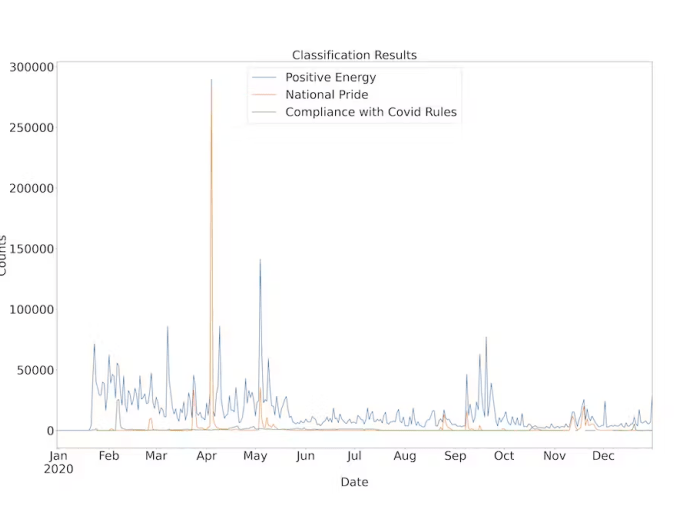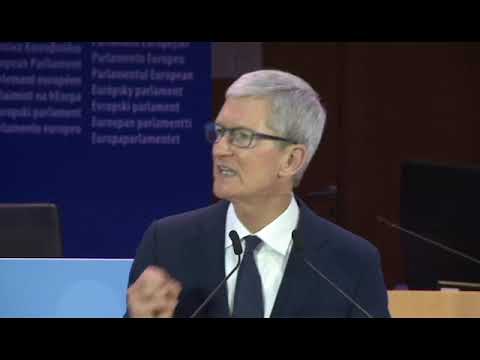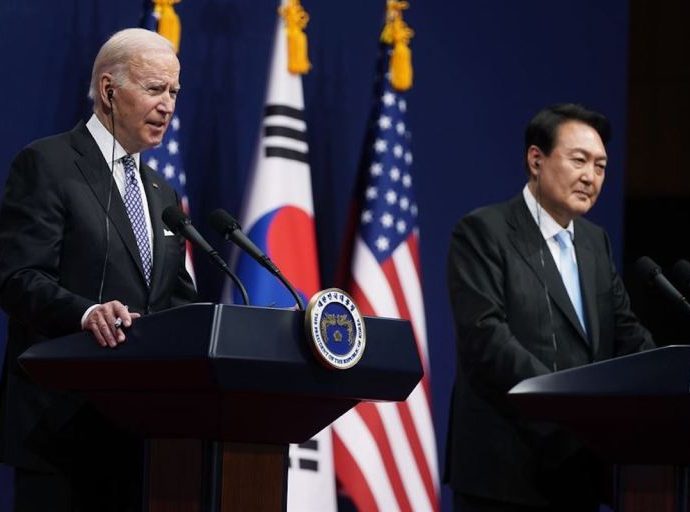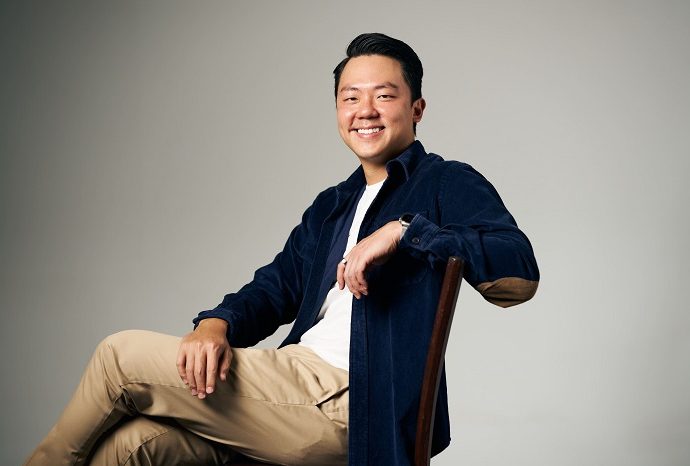Elon Musk says China will initiate AI regulations
Musk departed Shanghai on Thursday, wrapping up a two-day trip to China in which he met senior Chinese government officials including the highest-ranking vice premier. Musk met with China’s foreign, commerce and industry ministers in Beijing. He also met with Chinese Vice Premier Ding Xuexiang on Wednesday, a source familiarContinue Reading
Chinese âidolâ superfans are nationalist activists
Thanks to the efforts of their fans, artists such as the South Korean band BTS have their faces everywhere in China (where they are known as “idols”) – from the subway to media articles and brand collaborations.
In 2016, Chinese fans of Jackson Yee (aka Yi Yangqianxi), a former member of the popular Chinese boy band TFBoys, celebrated their idol’s birthday in style. They partied on a cruise in Shanghai, bought a video ad in Times Square and flew cake-shaped hot air balloons over London and New York.

As in other East Asian countries, idol fans in China are changing from passive consumers of products to promoters, striving to personally grow their idols’ popularity, reputation and business value. This development added an estimated ¥100 billion (£613 million) to the Chinese idol market in 2020.
Research in 2015 and 2018 found that Chinese idol fans now also act as one of the main digital forces in cyber nationalist activism, supporting the Chinese state’s core values, such as positive energy and patriotism.
In a paper published earlier this year my coauthor Ting Luo and I analyzed the ways idol fans co-opted nationalism in their reaction to the Covid pandemic.
We looked at over six million posts about the pandemic from December 2019 to December 2020 on Sina Weibo (a Twitter-like social media platform in China) that contained promotional messages about idols. Through in-depth interviews with idol fans, we unpacked the ways they engaged with mainstream discourse to publicize and glorify their idols.
These nationalist expressions are often triggered by political incidents and events. The most notable example is the “Diba Expedition.” Following the Taiwan election in 2016, fans organized to swamp the Facebook pages of Taiwanese politicians with emojis and memes, for example.
Idol fans are both organized and disciplined. Our evidence shows that they also used discussions around the Covid pandemic to promote their idols.
How the pandemic influenced fan behavior
In Weibo posts, idol fans argued that albums, songs and films by their idols related to the pandemic. Many claimed to have made contributions to pandemic efforts and engaged in charity work in the names of their idols.
These activities are typical of the chart-beating behaviors of fandoms, carried out to boost the popularity of their idols.

Idol fans examined in our study and others understand the logic of celebrity ranking lists on Weibo. This is when artists need enough posts, reposts and likes to be on the trending page, upping their profile among the wider public. Fans commonly post and comment on Weibo to create positive images of their idols.
The public images these fans have built are also nationalist. Idols are seen as role models, who make positive contributions to society, even in difficult times. In idol fans’ social media expressions of national pride and compliance to state rules during the pandemic, they posited their idols as loyal to the nation, the people and the party state.
As one fan told us:
We want to make our idol appear as a high-class artist. To achieve the goal, we need evidence of our idol being invited for and participating in performances/shows by the official media or the state. [Without recognition from the state] no matter how well an idol’s album sells, people would consider the idol no more than an online influencer.
Idol fans often interpret “nationalism” as loyalty to national identity and adherence to the state’s policies and rules. Many of them deliberately demonstrate this understanding in their fan posts on social media. For example, idol fans actively joined the state-directed campaign on China’s National Mourning Day and expressed national pride while quoting their idols in the posts.
They also purposefully respond to political and social events as a way to promote their idols’ nationalist ideals, as shown in the chart below tracking fan posts during the Covid pandemic. (Author provided. No reuse).

‘Nationalist’ posts about idols
In addition to commercial strategies such as subway advertisements, music streaming and crowdfunding, these fans see participation in events organized by the state and official media as recognition by the state.
Such “official stamps” can bring both material benefits and political status and reputation for their idols, ultimately boosting their popularity.
Our research has shown that idol fans engage not only the commercial logic common in Japanese and Korean K-pop/idol culture (more publicity brings more commercial value) but also the political logic propagated by the state in China (more “official stamps” bring more political value and commercial value in return).
The skillful deployment of nationalism strategies in their everyday life prepares idol fans, so that the mantra of “love for idols” can quickly transform into “love for the state.”
Yan Wang is a lecturer in digital sociology at Lancaster University.
This article is republished from The Conversation under a Creative Commons license. Read the original article.
Life and death choices at India train crash hospital
BALASORE, India: When India saw its worst train crash in decades, the nearest state-run hospital was transformed into a scene of desperation – and critical decisions. Every few moments, another cacophony of ambulance sirens outside the Fakir Mohan Medical College and Hospital announced the delivery of more patients, many ofContinue Reading
Cash-strapped Bangladesh shuts power plant as heatwave hits
DHAKA: Cash-strapped Bangladesh shut its biggest power plant on Monday (Jun 5) because it was unable to afford the coal to fuel it, as a sweltering heatwave creates surging electricity demand. The 1,320-megawatt government-run Payra Power Plant in southern Bangladesh had already slashed production last month due to fuel shortages,Continue Reading
India suspension bridge collapses for a second time
NEW DELHI: A suspension bridge being built in India’s poorest state collapsed for the second time in 14 months, with one person reported missing, ANI reported on Monday (Jun 5). The bridge was being built over the Ganges river in the Bhagalpur district of India’s eastern state of Bihar. ConstructionContinue Reading
Homes, high-tech farms and sports facilities: What Singapore Turf Club site might be used for

Mr Eugene Lim, key executive officer of ERA Realty Network, said that the terrain is flat and can be very easily adapted for residential and a variety of other uses.
He added that based on the current surrounding land uses in the URA Master Plan, residential uses may be incorporated both on the eastern and western portions of the site as an extension of current residential uses.
“On the eastern side, flanked by the BKE, land could be set aside for HDB flats. There is an existing HDB flat cluster at Woodlands Street 41 just across the BKE,” he said.
“Over at the Western end along Turf Club Avenue, we envisage land could be set aside for low-rise condominiums or landed plots as there are already existing landed properties at the Jalan Kasau area.”
NEED FOR MORE FACILITIES
While some work may need to be done to shield homes from industrial land, this can be “easily overcome” with the placement of non-residential buildings to create the necessary buffer, said Huttons’ Mr Lee.
Mr Ismail Gafoor, CEO of PropNex said that the revamping of Kranji as a new town will support the development of the Woodlands Regional Centre, expected to be the largest economic hub in the north of Singapore.
“As there are currently limited amenities in the Kranji area, the provision of more retail, food and beverage, and childcare options, for example, will be necessary to support and grow the residential population,” he added.
Mr Lee said a theme park or sporting facilities may also be considered as the Singapore Sports School is already in Woodlands.
Other potential uses could include hotels or high-tech farms, said Dr Lee Nai Jia, PropertyGuru Group’s head of real estate intelligence, data and software solutions.
“There is definitely some redevelopment potential for retail and hotels when the zoo is fully redeveloped under the Mandai Rejuvenation Project. Separately, there may be new needs for land for food labs and high-tech farming,” he said.
Another potential development that could “catalyse the area” is the Johor Bahru-Singapore Rapid Transit System (RTS) Link, he added.
Dr Lee noted that the area is considered far from most current major employment clusters and that it will “take some time for people to change their perception”.
“Should one or more choice primary schools relocate their campuses to Kranji, it will provide an impetus for families with school-going children to benefit from this redevelopment,” he added.
Mogul.sg chief research officer Nicholas Mak said that the closure of the Singapore Turf Club and the redevelopment of the site is only one part of the larger redevelopment and rezoning of the Kranji and Sungei Kadut area.
Most of the land in the area is either zoned for general industrial use or for future detailed development, that is, the exact land use zoning has not been assigned. A small amount of land is zoned for residential use.
He said that homes in the area will benefit from water views of the Kranji Reservoir or the Straits of Johor if industrial land around the reservoir or the coast is rezoned for residential and associated uses, such as for schools, retail, sports and recreation.
Ms Indranee said the redevelopment of the Singapore Racecourse site is in line with a broader plan to develop the northern region of Singapore. This includes the expansion of Woodlands Checkpoint and a masterplan for Lim Chu Kang to become a high-tech agri-food sector.
How AI will win your vote at the next election
Could organizations use artificial intelligence language models such as ChatGPT to induce voters to behave in specific ways?
Senator Josh Hawley asked OpenAI CEO Sam Altman this question in a May 16, 2023, US Senate hearing on artificial intelligence. Altman replied that he was indeed concerned that some people might use language models to manipulate, persuade and engage in one-on-one interactions with voters.
Altman did not elaborate, but he might have had something like this scenario in mind. Imagine that soon, political technologists develop a machine called Clogger – a political campaign in a black box. Clogger relentlessly pursues just one objective: to maximize the chances that its candidate – the campaign that buys the services of Clogger Inc – prevails in an election.
While platforms like Facebook, Twitter and YouTube use forms of AI to get users to spend more time on their sites, Clogger’s AI would have a different objective: to change people’s voting behavior.
How Clogger would work
As a political scientist and a legal scholar who study the intersection of technology and democracy, we believe that something like Clogger could use automation to dramatically increase the scale and potentially the effectiveness of behavior manipulation and microtargeting techniques that political campaigns have used since the early 2000s.
Just as advertisers use your browsing and social media history to individually target commercial and political ads now, Clogger would pay attention to you – and hundreds of millions of other voters – individually.
It would offer three advances over the current state-of-the-art algorithmic behavior manipulation. First, its language model would generate messages — texts, social media and email, perhaps including images and videos — tailored to you personally.
Whereas advertisers strategically place a relatively small number of ads, language models such as ChatGPT can generate countless unique messages for you personally – and millions for others – over the course of a campaign.
Second, Clogger would use a technique called reinforcement learning to generate a succession of messages that become increasingly more likely to change your vote. Reinforcement learning is a machine-learning, trial-and-error approach in which the computer takes actions and gets feedback about which work better in order to learn how to accomplish an objective.
Machines that can play Go, Chess and many video games better than any human have used reinforcement learning.

[embedded content]
Third, over the course of a campaign, Clogger’s messages could evolve in order to take into account your responses to the machine’s prior dispatches and what it has learned about changing others’ minds. Clogger would be able to carry on dynamic “conversations” with you – and millions of other people – over time. Clogger’s messages would be similar to ads that follow you across different websites and social media.
The nature of AI
Three more features – or bugs – are worth noting.
First, the messages that Clogger sends may or may not be political in content. The machine’s only goal is to maximize vote share, and it would likely devise strategies for achieving this goal that no human campaigner would have thought of.
One possibility is sending likely opponent voters information about nonpolitical passions that they have in sports or entertainment to bury the political messaging they receive.
Another possibility is sending off-putting messages – for example incontinence advertisements – timed to coincide with opponents’ messaging. And another is manipulating voters’ social media friend groups to give the sense that their social circles support its candidate.
Second, Clogger has no regard for truth. Indeed, it has no way of knowing what is true or false. Language model “hallucinations” are not a problem for this machine because its objective is to change your vote, not to provide accurate information.
Third, because it is a black box type of artificial intelligence, people would have no way to know what strategies it uses.

[embedded content]
Clogocracy
If the Republican presidential campaign were to deploy Clogger in 2024, the Democratic campaign would likely be compelled to respond in kind, perhaps with a similar machine. Call it Dogger. If the campaign managers thought that these machines were effective, the presidential contest might well come down to Clogger vs. Dogger, and the winner would be the client of the more effective machine.
Political scientists and pundits would have much to say about why one or the other AI prevailed, but likely no one would really know. The president will have been elected not because his or her policy proposals or political ideas persuaded more Americans, but because he or she had the more effective AI. The content that won the day would have come from an AI focused solely on victory, with no political ideas of its own, rather than from candidates or parties.
In this very important sense, a machine would have won the election rather than a person. The election would no longer be democratic, even though all of the ordinary activities of democracy – the speeches, the ads, the messages, the voting and the counting of votes – will have occurred.
The AI-elected president could then go one of two ways. He or she could use the mantle of election to pursue Republican or Democratic party policies. But because the party ideas may have had little to do with why people voted the way that they did – Clogger and Dogger don’t care about policy views – the president’s actions would not necessarily reflect the will of the voters. Voters would have been manipulated by the AI rather than freely choosing their political leaders and policies.
Another path is for the president to pursue the messages, behaviors and policies that the machine predicts will maximize the chances of reelection. On this path, the president would have no particular platform or agenda beyond maintaining power. The president’s actions, guided by Clogger, would be those most likely to manipulate voters rather than serve their genuine interests or even the president’s own ideology.
Avoiding Clogocracy
It would be possible to avoid AI election manipulation if candidates, campaigns and consultants all forswore the use of such political AI.
We believe that is unlikely. If politically effective black boxes were developed, the temptation to use them would be almost irresistible. Indeed, political consultants might well see using these tools as required by their professional responsibility to help their candidates win. And once one candidate uses such an effective tool, the opponents could hardly be expected to resist by disarming unilaterally.
Enhanced privacy protection would help. Clogger would depend on access to vast amounts of personal data in order to target individuals, craft messages tailored to persuade or manipulate them, and track and retarget them over the course of a campaign. Every bit of that information that companies or policymakers deny the machine would make it less effective.

[embedded content]
Another solution lies with elections commissions. They could try to ban or severely regulate these machines. There’s a fierce debate about whether such “replicant” speech, even if it’s political in nature, can be regulated. The US’s extreme free speech tradition leads many leading academics to say it cannot.
But there is no reason to automatically extend the First Amendment’s protection to the product of these machines. The nation might well choose to give machines rights, but that should be a decision grounded in the challenges of today, not the misplaced assumption that James Madison’s views in 1789 were intended to apply to AI.
European Union regulators are moving in this direction. Policymakers revised the European Parliament’s draft of its Artificial Intelligence Act to designate “AI systems to influence voters in campaigns” as “high risk” and subject to regulatory scrutiny.
One constitutionally safer, if smaller, step, already adopted in part by European internet regulators and in California, is to prohibit bots from passing themselves off as people. For example, regulation might require that campaign messages come with disclaimers when the content they contain is generated by machines rather than humans.
This would be like the advertising disclaimer requirements – “Paid for by the Sam Jones for Congress Committee” – but modified to reflect its AI origin: “This AI-generated ad was paid for by the Sam Jones for Congress Committee.”
A stronger version could require: “This AI-generated message is being sent to you by the Sam Jones for Congress Committee because Clogger has predicted that doing so will increase your chances of voting for Sam Jones by 0.0002%.” At the very least, we believe voters deserve to know when it is a bot speaking to them, and they should know why, as well.
The possibility of a system like Clogger shows that the path toward human collective disempowerment may not require some superhuman artificial general intelligence. It might just require overeager campaigners and consultants who have powerful new tools that can effectively push millions of people’s many buttons.
Archon Fung, Professor of Citizenship and Self-Government, Harvard Kennedy School and Lawrence Lessig, Professor of Law and Leadership, Harvard University
This article is republished from The Conversation under a Creative Commons license. Read the original article.
Why South Koreans want the bomb
South Korean President Yoon Suk Yeol’s state visit to Washington to meet with US President Joe Biden in April 2023 marked the 70th anniversary of the US-South Korea alliance.
The meeting provided an opportunity for the two leaders to highlight US-South Korean alignment and deepening cooperation on issues of peninsular, regional and global significance.
Of particular significance during the summit meeting was the unveiling of the Washington Declaration that established the US-South Korea Nuclear Consultative Group (NCG). The Declaration represents a response to several consequential domestic and regional developments.
In South Korea, the public debate over developing nuclear weapons gained unprecedented attention after President Yoon’s comment in January 2023 about the possibility of South Korea going nuclear. Polls in South Korea show the percentage of domestic support for the acquisition of nuclear weapons ranging between the high 60s and mid-70s.
The factors driving the South Korean public’s sentiment include concerns over the US extended deterrence commitment and whether the United States would defend South Korea if North Korea were to simultaneously threaten the US mainland.
Advocates of nuclearization also call for nuclear balance with North Korea’s nuclear arsenal and greater autonomy and agency over South Korea’s ability to defend itself in the face of growing regional and global security challenges.
Regionally, North Korea has continued to advance its military capabilities. Within the first five months of 2023, the country has launched six short-range ballistic missile tests, three cruise missile tests and three intercontinental ballistic missile tests.

These tests — which have used a diverse set of launch sites and delivery systems — signify North Korea’s desire for continued progress within its weapons program through the operationalization of potential nuclear-use scenarios.
These advancements also underscore North Korea’s perception that it must continue strengthening its nuclear forces and maintain its readiness to counter what it views as long-term military threats to the survival of the regime.
In response to the growing threat posed by North Korea’s weapons program, the United States, Japan and South Korea have strengthened trilateral security cooperation with the expansion of military exercises.
In 2023, the three countries conducted joint military drills for ballistic missile defense, anti-submarine warfare and search-and-rescue and maritime missile defense. These exercises aim to enhance force interoperability and showcase regional trilateral cooperation.
Current discussions for the United States, Japan and South Korea to share North Korean missile warning data in real-time further reinforce efforts by the three countries to strengthen deterrence in the region.
The Washington Declaration does not represent a fundamental change in US nuclear policy towards South Korea, such as the redeployment of US nuclear weapons or sharing of US nuclear assets. Rather, the agreement assuages South Korean anxieties about North Korea and US defense commitments through joint planning, enhanced consultations and expanded training and tabletop exercises.
The NCG envisions an increased role for South Korea to consult and coordinate with the United States against a potential North Korean nuclear attack. This addresses the concerns of South Korean advocates who have argued since the early 2000s for strengthening extended deterrence efforts within the alliance and embedding US nuclear deterrence into a broader framework like the NATO Nuclear Planning Group.
In this sense, opponents of a nuclear South Korea and moderate nuclear proponents now have a concrete agreement to point to when debating against independent nuclear acquisition.
But the agreement may not prove satisfactory for resolving the South Korean public’s perceived vulnerability against North Korea’s expanding nuclear arsenal. Nor does it assuage nuclear proponents who desire the return of US nuclear weapons or US support for a South Korean nuclear weapons program.
For some nuclear advocates, it is likely that only South Korean control over nuclear weapons — whether owned by the United States or South Korea — will resolve the current nuclear debate.
The ability of the NCG to quell South Korean desires for nuclear weapons may depend on the speed and robustness of its implementation.

Still, the United States and South Korea will simultaneously need to explore alternative or additional measures for bringing North Korea back to the negotiating table. Extended deterrence and diplomacy should strengthen in conjunction with — rather than at the expense of — one another.
While the Washington Declaration may have moved forward the needle in addressing existing questions regarding US defense commitments to South Korea, South Koreans will continue assessing whether US extended deterrence could come under future threat and how South Korean defense capabilities should evolve alongside regional security threats.
The upcoming US presidential election and the international community’s response to continued North Korean testing will likely contribute to how South Koreans evaluate the path ahead.
Jennifer Ahn is the Research Associate for Korea Studies at the Council on Foreign Relations.
This article was originally published by East Asia Forum and is republished under a Creative Commons license.
Did Shangri-La give birth to a new Quad?
The recently-concluded Shangri-La Dialogue in Singapore was among the most high-stakes confabs in recent years, as multiple powers explored ways to avoid a full-blown New Cold War and armed confrontation between the US and China.
But with no sign of any immediate thaw between the two superpowers, new, inchoate security groupings are emerging on the margins.
After months of intense anticipation, defense chiefs from the US, the Philippines, Australia and Japan held their first-ever quadrilateral talks on the sidelines of the Shangri-La forum, with Beijing’s maritime assertiveness in mind.
US Secretary of Defense Lloyd Austin, Japan’s Defense Minister Yasukazu Hamada, Australian Defense Minister Richard Marles and Philippine Acting Defense Secretary Carlito Galvez held an unprecedented meeting with huge symbolic and big operational implications.
Atop their agenda was proposed quadrilateral joint patrols in the South China Sea for later this year, which if held would mark a major milestone for America’s evolving “integrated deterrence” strategy to contain China’s rise in the region.
Although playing down the idea earlier this year, Washington seems increasingly open to new quadrilateral mechanisms beyond its existing “Quad” partnership with India, Australia and Japan, which by accounts has been beset by internal divisions over confronting Russia in the wake of the Ukraine conflict.
Over the weekend, yet another incident served as a stark reminder of rising geopolitical volatility in the Indo-Pacific. Following a rare joint sail by US and Canadian naval forces through the Taiwan Straits, Beijing responded with aggressive counter-maneuvers and strident diplomatic protests.
During a “routine” transit through the area, the US Navy’s 7th Fleet said the guided-missile destroyer USS Chung-Hoon and Canada’s HMCS Montreal reportedly came close to blows with a Chinese navy ship, which cut across the bow of the American destroyer on two occasions.
Just days earlier, the Pentagon released footage that showed a Chinese fighter jet performing a similar maneuver, albeit in the skies, against an American surveillance aircraft.

Rising tensions in the seas and the skies were mirrored by tough diplomatic exchanges between US and Chinese defense chiefs at the Singapore forum. For his part, China’s defense chief Li Shangfu warned against a “Cold War mentality” in a not-so thinly-veiled jab at the Australia-UK-US (AUKUS) alliance and Quad.
“In essence, attempts to push for NATO-like [alliances] in the Asia-Pacific is a way of kidnapping regional countries and exaggerating conflicts and confrontations, which will only plunge the Asia-Pacific into a whirlpool of disputes and conflicts,” the Chinese official warned while reiterating an uncompromising position on Beijing’s plans to “reunify” self-ruling Taiwan.
For his part, US defense chief Austin warned against any aggressive maneuvers against Taiwan while underscoring his vocal concerns over the virtual breakdown of military-to-military communication channels with China.
“I am deeply concerned that the PRC (People’s Republic of China) has been unwilling to engage more seriously on better mechanisms for crisis management between our two militaries,” Austin said during his speech in Singapore.
“The more that we talk, the more that we can avoid the misunderstandings and miscalculations that could lead to crisis or conflict,” he added.
The deadlock in Sino-American relations has likely forced Washington to reconsider its earlier apprehensions with new Quad groupings in the region.
Earlier this year, US Assistant Secretary of State Daniel Kritenbrink, during a regional tour in Asia, played down suggestions of a new Quad grouping, including by Philippine Senator Francis Tolentino, who has pushed for “own version of Quad” to check China’s ambitions in adjacent waters.
“I guess regarding what you called, a new Quad, I would say, ‘no.’ We’re not looking to establish a new quad,” Kritenbrink said in an online press briefing during his Manila visit last month.
“We’re not looking to establish any new formal mechanisms in the Indo-Pacific at this point,” the senior US diplomat said, adding how his country is “happy to assist with the ongoing modernization of the Armed Forces of the Philippines including in the maritime domain.”

Nevertheless, Kritenbrink left the door open for “opportunities in the future for such close allies as the United States, Philippines and Japan to look at ways that maybe we could expand our cooperation” amid growing discussions over a trilateral Japan-Philippine-US (JAPHUS) security grouping.
Following Philippine President Ferdinand Marcos Jr’s consequential visit to the White House and the Pentagon last month, which saw the two treaty allies sign new bilateral defense guidelines, moves to forge de facto alternative quadrilateral groupings are accelerating.
Historically, Manila served as a venue for the two key moments in the birth of the original Quad. The first US, Australia, India, and Japan inaugural meeting took place on the sidelines of the ASEAN Regional Forum (ARF) gathering in Manila in 2007. Exactly a decade later, the leaders of the four powers, wearing traditional Filipino barongs, held their first formal official-level discussions also in Manila.
Now, the US is overseeing the emergence of a new quadrilateral grouping, especially with the Philippines’ emergence as a new star ally in Asia under a more Western-friendly regime.
During the Shangri-La Dialogue, Philippine Defense Chief Carlito Galvez took an uncompromising position on the South China Sea disputes, signaling Manila’s hardening line against China’s assertiveness over its claimed features and islands.
“We view the 2016 arbitration award as not only setting the reason and right in the South China Sea, but also as an inspiration for how matters should be considered by states facing similar challenging circumstances,” Galvez said before his Indo-Pacific counterparts.
“President Ferdinand Marcos Jr has strongly emphasized his directive to safeguard every square inch of our territory from any foreign power… The UNCLOS (United Nations Convention on the Law of the Sea) and the 2016 arbitration are and will continue to be the twin anchors of our policies and actions in the West Philippine Sea and the broader South China Sea,” he added while emphasizing his country’s commitment to enhance maritime security cooperation with like-minded powers.
Last week, the Philippines, Japan and US held their first-ever joint coast guard drills in Manila Bay. Later this year, the US and its regional allies including the Philippines are expected to conduct potentially unprecedented quadrilateral joint patrols in the South China Sea.

Closer intelligence-sharing, expanded joint drills and arms transfers among the four allies are likely to follow, with Tokyo exploring its own visiting forces agreement with Manila, which has already hosted large-scale US and Australian military presences in the past decade.
In an official statement following the inaugural Philippine, US, Japan and Australia quadrilateral meeting in Singapore, Japan’s Ministry of Defense said that the four allies “discussed regional issues of common interest and opportunities to expand cooperation,” while vowing to double down on new and pre-existing cooperative agreements.
“It was an honor to meet with Secretary Galvez, Minister Hamada, and DPM Marles to discuss opportunities to expand cooperation across our four nations, including in the South China Sea,” Austin said in a tweet after the meeting. “We are united in our shared vision for advancing a free and open Indo-Pacific,” he added.
Follow Richard Javad Heydarian on Twitter at @Richeydarian
Joel Neoh joins NASDAQ-listed genomics and precision oncology company, Prenetics as MD of its consumer arm, CircleDNA
Tasked to expand CircleDNA into leading consumer preventive healthcare platform
Intrigued by mission of Prenetics & CircleDNA, immense potential to positively affect lives
Prenetics Global Ltd a Nasdaq listed genomics and precision oncology company, has announced the appointment of Joel Neoh (pic) to head up CircleDNA as Managing Director. Additionally, Joel will…Continue Reading










